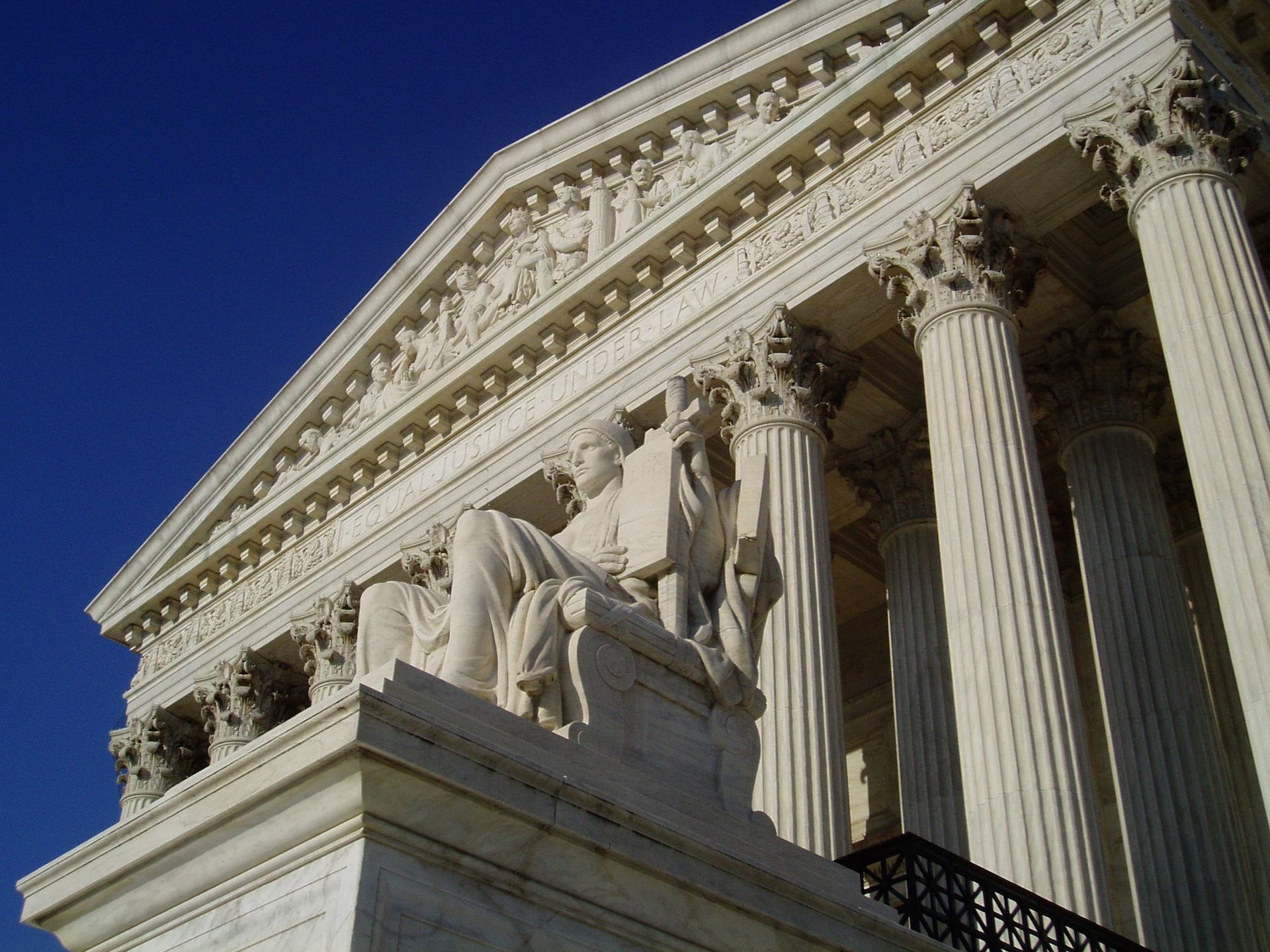Justices at the US Supreme Court raised doubts regarding a museum’s arguments today in an appeal that could end the decades-long dispute over a Nazi-stolen painting by Camille Pissarro—or let the heirs of the original Jewish owner continue their quest to get it back. At issue is whether the lower federal courts used the correct law to choose the law of the case.
The painting is held by the Thyssen-Bornemisza Collection Foundation (TBF), an instrumentality of the government of Spain that manages the Museo Nacional Thyssen-Bornemisza in Madrid, which challenges the heirs’ argument that the California federal appeals court should not have confirmed the lower federal court’s use of the wrong “choice of law” rule to select the law to adjudicate the case, leading it to conclude the TBF owned the painting. The suit falls under the Foreign Sovereign Immunities Act (FSIA), a federal statute that bars suits against foreign states in US courts to protect US foreign policy interests but allows claims in rare exceptions.
The exception that hauls the TBF into court arises from events in Nazi Germany in 1939, when Lilly Cassirer Neubauer sold Pissarro’s Rue St Honoré, apres-midi, effet de pluie (1897) to a Nazi for $360, a sum that, as a Jew, she was barred from accessing. The lawsuit has acknowledged the transfer as an unlawful forced sale or theft.
In 2005 the claimants, Neubauer’s heirs, having discovered that the TBF held the painting, sued in California after the museum denied their claim. While an agency of the Spanish government would normally escape suit under the FSIA, the case proceeded under the “expropriation exception”, which permits claims against foreign states for property taken in violation of international law. Applying Spain’s substantive law, the federal district court applied the Spanish doctrine of “acquisitive prescription”, which vests ownership after six years of possession if the possessor did not actually know the property was stolen. The TBF bought the work in 1993, and the district court determined that the TBF was the owner, confirming in a 2019 trial that the TBF lacked “actual knowledge” that the work was stolen. In contrast, under California’s law—if it had applied—the Nazi, having acquired the painting by theft, could never convey good title, and the heirs would still own the painting. On appeal, the heirs challenged the trial court’s use of federal common law in selecting Spanish law for the case.
The TBF is asking the Supreme Court to side with what could be seen as a rogue theory, because among the five federal appeals courts to rule on the question, California’s is the only court to use “federal common law”, derived from federal court decisions, to choose the substantive law when a foreign state is sued.

James Earle Fraser's statue The Authority of Law outside the US Supreme Court building Photo by Matt H. Wade, via Wikimedia
In today’s argument the heirs’ lawyer, David Boies, of New York, said that because TBF is not immune, the text of the FSIA makes it “liable to the same manner and to the same extent as a private individual under like circumstances”. If the government museum “were a private museum”, Boise argued, California’s choice of law rules would apply. Any other rule would let courts apply different rules for sovereigns, resulting in the TBF “not being liable in the same manner and to the same extent as a private museum”.
Masha Hansford, assistant to the US Solicitor General, arguing for the US government (which often opines in FSIA cases), said that the “same manner [and] extent” clause “provides a clear answer to the question”. If the TBF “were a private art gallery, everyone agrees” that California’s choice of law rules would apply. She said the government disagreed with the TBF’s argument that state choice of law rules would not give sufficient weight to foreign policy concerns, saying such a situation had not arisen in the 30 years since the New York federal appeals court ruled that state choice of law rules apply to FSIA cases.
Lawyer Thaddeus Stauber, of Los Angeles, argued for the TBF, saying nothing in the FSIA requires use of a state’s choice of law test. Because the FSIA implicates foreign relations, it should fit within federal choice of law rules, he urged. He advocated for a two-step process, by which choice of law would first be determined using federal rules, after which the “same manner and extent” treatment would apply.
The justices repeatedly questioned the TBF’s position. “I don’t quite understand how a sovereign can be treated the same as a private individual if you don’t use the same choice of law rules,” Justice Clarence Thomas said. Justice Elena Kagan echoed his point, saying that once the FSIA lifts immunity, “the foreign state really isn’t very special”.
Justice Samuel Alito asked where federal common law would be found if it is to govern choice of law in FSIA cases, and cautioned that different courts could choose different standards.
Stauber cited the lawsuit’s duration. “To find out 10, 12, 15 years later after the litigation has been going on” that the choice of law was being questioned undercuts the FSIA’s goal of treating foreign sovereigns fairly, he said.
“Well, I think it’s pretty fair at that stage to tell them you’re going to be treated the same as a private party,” Chief Justice John Roberts replied.
The federal district court said that Spanish law would have applied even if it had used California’s choice of law rule, but the heirs did not have a chance to appeal that. If the Supreme Court says California’s choice of law rule should have applied, the heirs seem set to ask the California appeals court to undo the lower court’s choice of Spanish law under the California choice of law rule and apply California law instead—under which a thief cannot convey good title.
A decision is expected by June. Whichever choice of law rule the Court ultimately says governs, it seems unlikely that the decision would have broad implications for the art world, which rarely brings foreign states into US courts.


